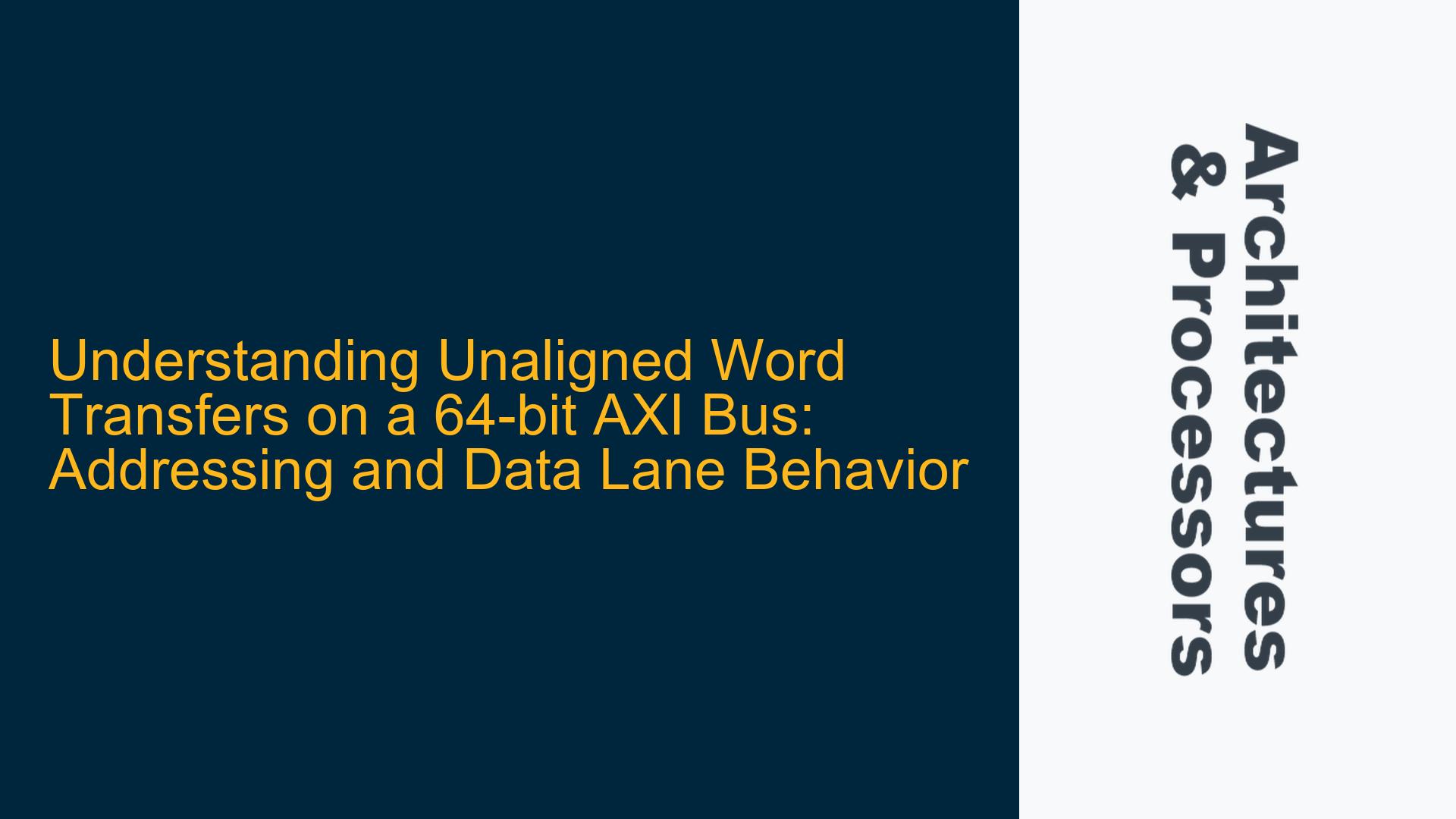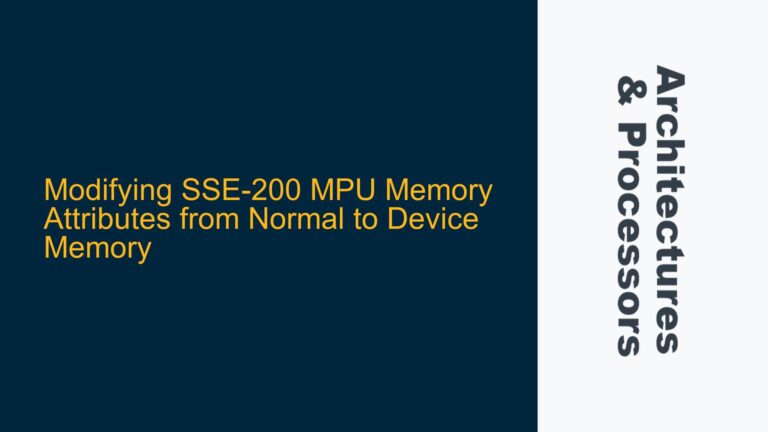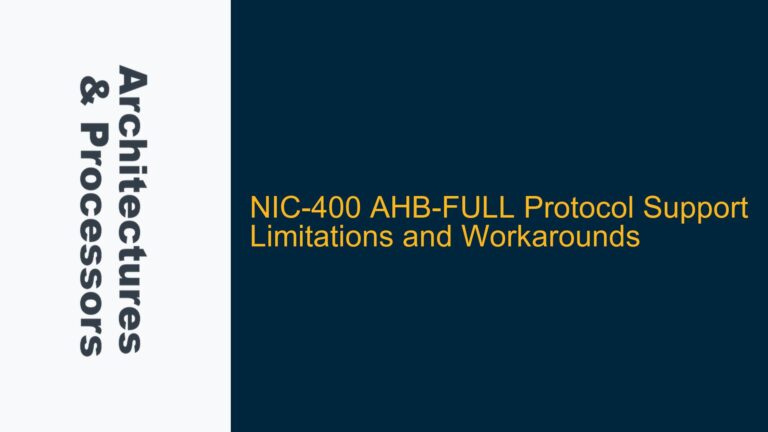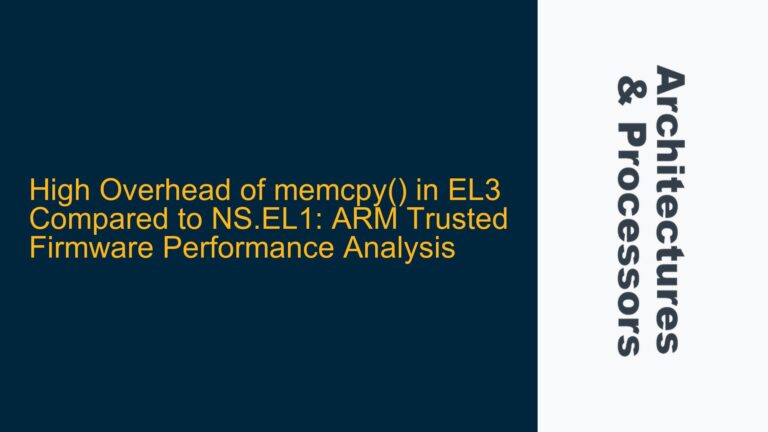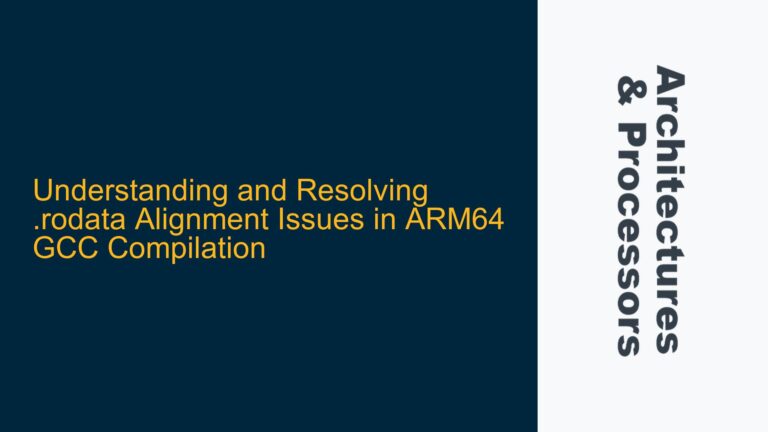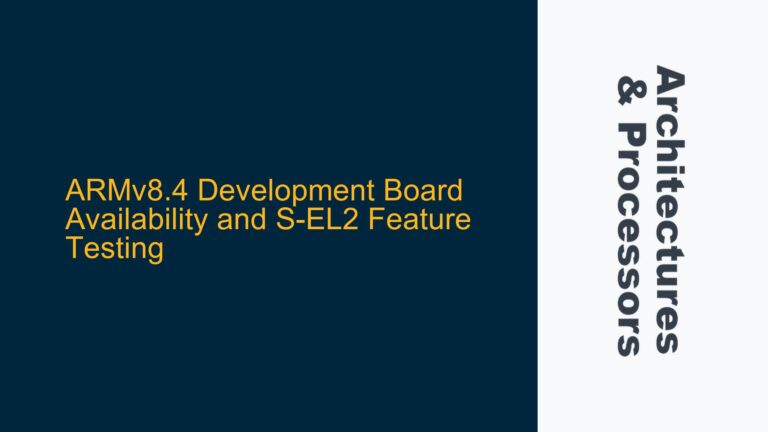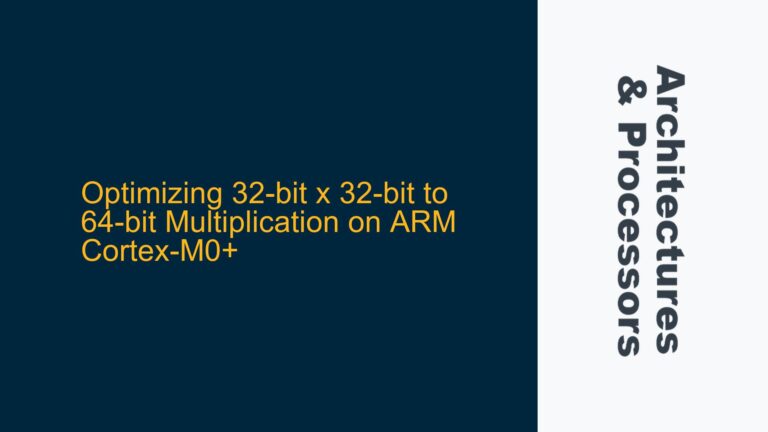Unaligned 32-bit Word Transfer on a 64-bit AXI Bus: A Detailed Breakdown
In the context of ARM AMBA AXI (Advanced eXtensible Interface) protocols, understanding how unaligned transfers operate on a 64-bit bus is critical for both design and verification engineers. The scenario involves a 32-bit word transfer starting at an unaligned address (0x07) on a 64-bit bus, with an INCR (incrementing) burst type and a burst length of four transfers. The key question revolves around why the second transfer starts at address 0x08 instead of 0x0C, and how the AXI protocol handles unaligned transfers in general.
To fully grasp this behavior, we must dissect the AXI protocol’s handling of address alignment, data lane mapping, and burst type implications. The AXI protocol, while claiming to support unaligned transfers, inherently operates within aligned boundaries for each transfer in a burst. This means that even though the starting address may be unaligned, subsequent transfers in an INCR burst will align themselves based on the transfer size (AxSIZE). This behavior is crucial for ensuring efficient data movement and avoiding protocol violations.
Memory Address Alignment and AxSIZE Constraints in AXI Transfers
The AXI protocol defines alignment based on the transfer size (AxSIZE), which specifies the number of bytes transferred in each beat of a burst. For a 32-bit transfer, the alignment boundary is 4 bytes. This means that the address must be a multiple of 4 for a 32-bit transfer to be considered aligned. In the given scenario, the starting address is 0x07, which is not aligned to a 4-byte boundary. However, the AXI protocol adjusts the effective address for the first transfer to the nearest lower aligned address, which is 0x04 in this case.
The unaligned portion of the transfer is handled by mapping the data to the appropriate byte lanes of the 64-bit bus. For the first transfer, only the byte lane corresponding to the unaligned portion (D[63:56]) is used for the 32-bit data. This mapping ensures that the data is correctly placed on the bus despite the unaligned starting address. After the first transfer, the address increments by the transfer size (4 bytes for a 32-bit transfer), resulting in the second transfer starting at 0x08. This behavior ensures that all subsequent transfers in the burst are aligned, simplifying the handling of data lanes and improving overall efficiency.
The alignment mechanism is particularly important for maintaining consistency across the bus fabric and avoiding protocol violations. If the burst type were FIXED instead of INCR, the address would not increment, and all transfers would remain unaligned to the same starting address. However, for INCR bursts, the alignment ensures that each transfer after the first is properly aligned, reducing complexity in the interconnect and memory controllers.
Implementing and Verifying Unaligned Transfers: Best Practices and Debugging Strategies
To implement and verify unaligned transfers on a 64-bit AXI bus, engineers must follow a systematic approach that includes understanding the protocol constraints, designing the bus fabric to handle unaligned transfers, and verifying the behavior through simulation and debugging. The first step is to ensure that the AXI interconnect and memory controllers are configured to handle unaligned transfers correctly. This includes setting up the appropriate byte lane mappings and ensuring that the address increment logic adheres to the AxSIZE constraints.
During verification, engineers should focus on corner cases involving unaligned transfers, such as starting addresses that are not aligned to the transfer size. This can be achieved by creating test scenarios that cover a range of unaligned addresses and transfer sizes. SystemVerilog and UVM (Universal Verification Methodology) can be used to create comprehensive testbenches that simulate these scenarios and verify the behavior of the AXI bus.
Debugging unaligned transfer issues requires a deep understanding of the AXI protocol and the ability to trace the flow of data through the bus fabric. Tools such as waveform viewers and protocol analyzers can be used to visualize the address and data signals, helping engineers identify and resolve issues related to unaligned transfers. Additionally, engineers should review the ARM Technical Reference Manual (TRM) for the specific AXI implementation to ensure that all protocol requirements are met.
In summary, unaligned transfers on a 64-bit AXI bus require careful consideration of address alignment, data lane mapping, and burst type implications. By understanding the protocol constraints and following best practices for implementation and verification, engineers can ensure that their designs handle unaligned transfers efficiently and correctly. This approach not only improves the performance of the bus fabric but also reduces the risk of protocol violations and integration issues.
